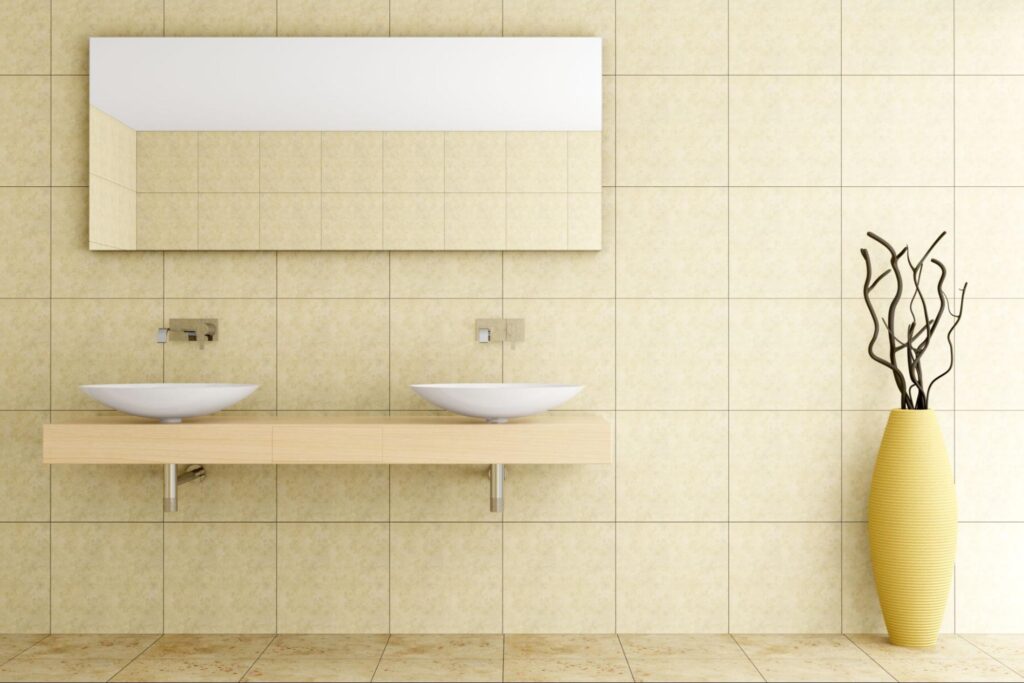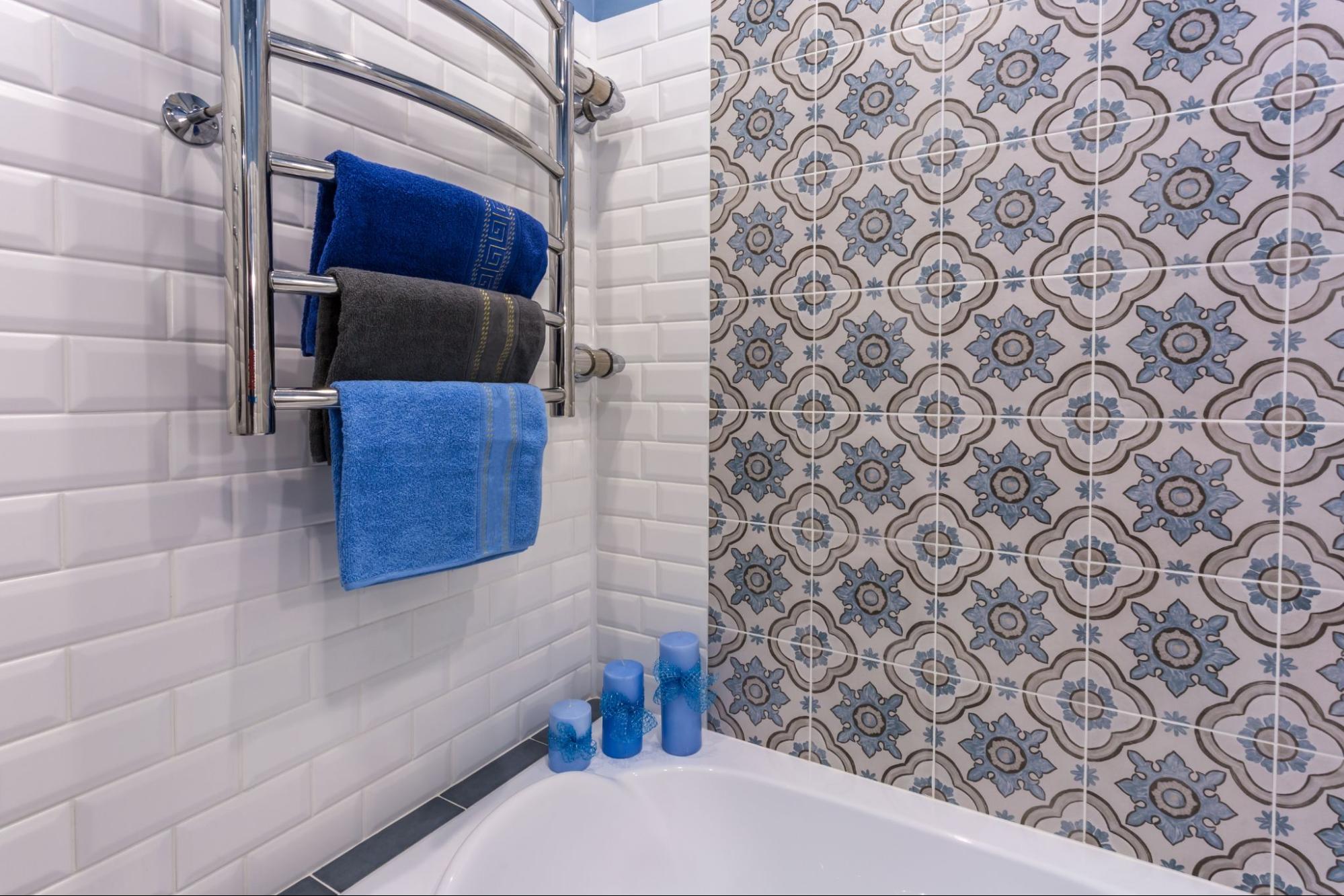
How to Choose the Best Bathroom Tiles for Small Spaces
Small bathrooms can quickly become claustrophobic without the right design choices. But limited square footage doesn’t have to limit your creativity. The right bathroom tiles can open the space, enhance light, and bring a clean, modern finish. Yet, many homeowners waste time and money on tiles that work against the room instead of with it. Choosing wisely from the start changes how the entire bathroom feels, every time you walk in.
Why Bathroom Tiles Matter in Small Spaces
Choosing bathroom tiles isn’t just about style, but about strategy. Every detail must contribute to the overall success of a small bathroom remodel. Tiles do more than cover surfaces; they shape how you feel in the room. They influence light, balance, and how spacious or cramped the space appears.
Tiles Can Trick the Eye to Create Space
The right tiles can create the illusion of spaciousness. Larger format tiles reduce the number of grout lines, making surfaces look cleaner and less cluttered. Tiles laid diagonally stretch the eye across the floor, adding depth. Similarly, horizontal tile patterns widen narrow walls, while vertical ones draw the eye upward. These tricks shift perception without changing the room’s actual size.
The Right Tile Makes the Space Feel Brighter
A well-lit bathroom feels more open, even if it’s tiny. Light-colored tiles reflect more light than darker ones, brightening shadowy corners. Glossy finishes reflect light, especially in rooms with limited natural sunlight. Pale porcelain, white ceramic, or marble-effect tiles can all help increase perceived brightness. High-resolution tiles can make a big difference if your bathroom lacks a window.
Cohesive Tiles Improve Room Flow
When surfaces match or blend well, the room flows better. Too many patterns or abrupt changes create visual breaks that shrink a room. Using the same tile on the floor and lower walls can help unify the space. Soft transitions between colors and materials also reduce visual noise. These choices simplify the room and make it feel calmer.
Best Types of Bathroom Tiles for Small Bathrooms
Not all tiles work equally well in tight spaces. Some materials are more practical, safer, and easier to manage in frequently used bathrooms. Matching the tile type with your home’s needs and personal style is essential.
Porcelain Tiles
Porcelain is a durable, water-resistant tile that’s well-suited for small bathrooms. It’s dense and challenging, which helps it handle heavy use without chipping. Porcelain tiles are available in a wide range of colors and textures, including options that mimic the appearance of stone or wood. Choose lighter tones with a subtle grain or texture for depth. Slip-resistant finishes make them safer on wet floors.
Ceramic Tiles
Ceramic tiles are affordable and available in a wide range of shapes and finishes. They’re easier to cut, making them useful for small bathrooms with many corners or curves. Many ceramic options look similar to porcelain but are lighter and easier to install. Their surface resists staining and holds up well to daily use, making them ideal for those on a budget without sacrificing style.
Mosaic Tiles
Mosaic tiles work best as accents or features, not full coverage. A small wall niche, backsplash, or shower strip can add color and texture without crowding the room. Due to their size, mosaics offer greater flexibility around curves and edges. Choose neutral or soft-tone mosaics to avoid visual clutter. Glass mosaics reflect light and enhance brightness.
Natural Stone
Natural stone like slate, travertine, or marble brings a rich look to small bathrooms. However, it requires more maintenance and sealing to stay clean and dry. These tiles are better suited for homeowners willing to maintain them regularly. Limit them to one surface to avoid making the room feel busy. Light-colored stone can still work if balanced with simpler finishes.

Matching Bathroom Tiles to Your Style
Color and finish profoundly impact the overall feel of small bathrooms. Pale, cool tones tend to expand the space. Finishes also affect how light moves and how surfaces feel underfoot. A brilliant mix of finish and tone improves comfort and functionality.
Light Colors Expand Small Bathrooms
White, ivory, and soft gray tiles help make rooms look more open. These tones reflect more light and reduce visual bulk. White subway tiles, marble-look porcelain, and sand-toned ceramics are good examples. If you want warmth, try soft beiges or pale taupe. Avoid strong contrasts, which can divide up the room.
Matte vs Glossy
Glossy tiles reflect more light, making surfaces appear brighter. However, they can become slippery when wet and may highlight water spots. Matte tiles offer better traction and can hide grime, making them ideal for busy bathrooms. Use gloss tiles on walls and matte tiles on floors in small spaces. It balances safety with visual brightness.
Neutral Palettes
Neutral colors create unity across surfaces. When walls and floors blend, the space feels bigger. A neutral scheme also gives flexibility with towels, fixtures, and paint. Beige, soft gray, and off-white are timeless and calm. You can still add small pops of color with accents or décor.
Earth Tones
If white and gray feel too sterile, earth tones offer a cozy alternative. Muted shades of sand, clay, and warm gray can still feel light. These tones create a relaxed atmosphere and pair well with wood or brass fixtures. Use them on floors or walls, but keep patterns simple. Too many strong tones can visually shrink the space.
Best Bathroom Tile Sizes and Layouts for Small Rooms
Tile size and layout can change how a room feels. Many assume that small tiles work best in small rooms, but that’s not always true. The key is to reduce visual interruption and create smooth movement across surfaces. Strategic layout can stretch a room in any direction.
Bigger Tiles Can Make the Room Look Larger
Larger tiles create fewer grout lines, making surfaces feel seamless. It reduces visual clutter and helps walls and floors appear wider. Choose tiles at least 12×24 inches for floors in small bathrooms. Stick with light colors and simple patterns to avoid overpowering the space. Keep grout lines narrow and match the color closely to the tile.
Consider Vertical Layouts for a Taller Look
Stacking tiles vertically draws the eye upward, making the ceiling appear higher. This technique works exceptionally well in shower walls and narrow rooms. A vertical running bond or stacked layout is both clean and modern. It also helps break up the boxy feel in small bathrooms. Use this layout with long rectangular tiles for the best effect.
Diagonal Patterns Create Movement and Flow
Laying floor tiles at a diagonal can visually expand tight bathrooms. It creates dynamic movement that distracts from size limitations. This layout works best with square or large rectangular tiles. Keep the rest of the room simple to avoid overwhelming the eye. Diagonal layouts take more planning but can be worth the extra effort.

Mix Sizes Strategically for Interest and Depth
Combining large wall tiles with smaller floor or border tiles adds texture. This approach keeps the space interesting without feeling busy. Use similar tones across sizes to maintain balance. For example, pair a soft beige large tile with a matching mosaic trim. This mix works well in remodeling projects where zones must be defined subtly.
Bathroom Tile Maintenance and Longevity
Tiles in small bathrooms are constantly exposed to water, steam, and dirt. Choosing tiles that hold up well reduces hassle in the long run. Additionally, maintenance-friendly tiles simplify daily cleaning routines and prevent damage over time.
Choose Easy-To-Clean Surfaces
Smooth tiles with sealed finishes are the easiest to clean. Glossy and glazed tiles resist stains and don’t absorb water. Matte tiles hide smudges but may need scrubbing. Avoid deeply textured or porous tiles that trap grime. Select what suits your lifestyle and the frequency of bathroom use.
Grout Choice Matters
Grout isn’t just filler; it shapes the overall look. Light grout can make tile layouts look clean, but it stains easily. Dark grout hides dirt but can make tiles look smaller. Sealed grout is easier to clean and lasts longer. Narrow grout lines help modernize small bathrooms.
Invest in Tiles That Last
Cheap tiles may look good at first, but often chip or discolor quickly. Quality tiles withstand changes in humidity and daily wear. Porcelain and glazed ceramics generally last longer than soft stone or unglazed clay. For home repair and remodeling, durable tiles mean fewer replacements. Long-lasting choices protect both your budget and design.
Tips on Picking Bathroom Tiles That Work
Choosing the best bathroom tiles for a small space is more than aesthetics. It’s about creating comfort, ease, and flow in your everyday life. A well-tiled bathroom blends utility with personal style and requires less effort to maintain over time.
Don’t Follow Trends Blindly
Trendy tile patterns can age quickly, especially in small rooms. Bold shapes or colors may look stylish now, but feel dated later. Instead, focus on timeless styles that feel personal and functional. If you want to incorporate trend elements, use them in a way that allows for easy updates later. Stick to classics for walls and floors, and change accessories more freely.
Sample Tiles in Your Actual Bathroom
Lighting changes everything. A tile that looks soft white in-store may appear harsh under your bathroom light. Always test samples at different times of the day. See how they look with your paint, fixtures, and light temperature. It’s worth waiting to find what works.
Balance Looks With Practical Needs
A beautiful tile that feels slippery when wet isn’t worth it. Likewise, a bold pattern that clashes with every towel or vanity won’t age well. Consider who uses the bathroom and how frequently it’s used. Match tile choices with daily habits, not showroom fantasies. Every decision should feel thoughtful and personal.
Find Bathroom Tiles That Maximize Every Inch
Every inch of your bathroom counts; the tiles you choose decide how that space works and feels. Don’t settle for whatever’s trending or easiest to grab off the shelf. Choose tiles that reflect how you live and what you value in comfort, style, and upkeep. Start small if you need to, but start with clarity. Your space deserves more than guesswork.
Explore the Drip Stop & Electric Pros blog for real solutions, design advice, and practical tips to improve every corner of your home.
The Difference Between…
A local handyman and a licensed contractor both improve homes,…



